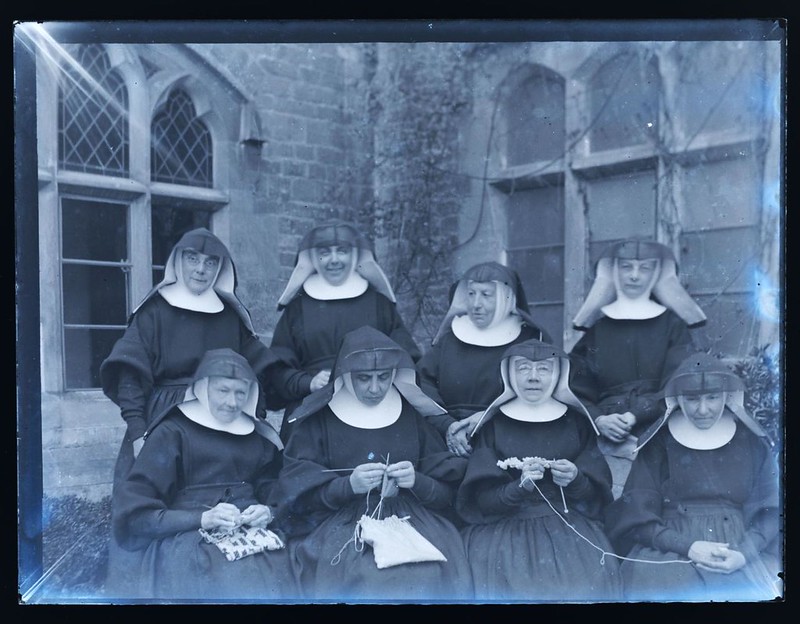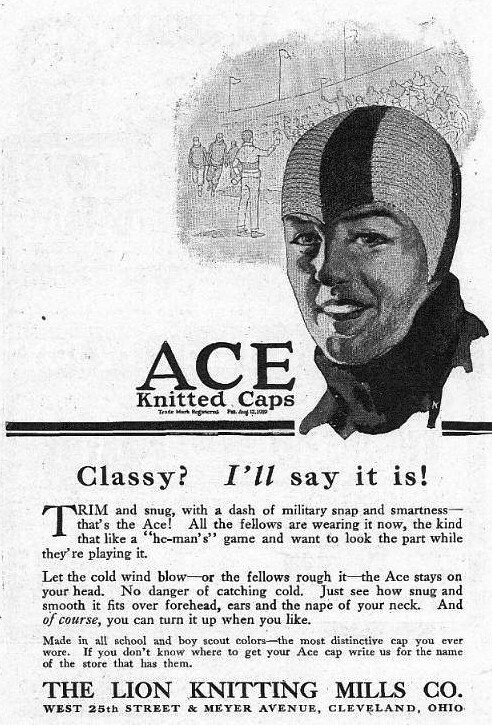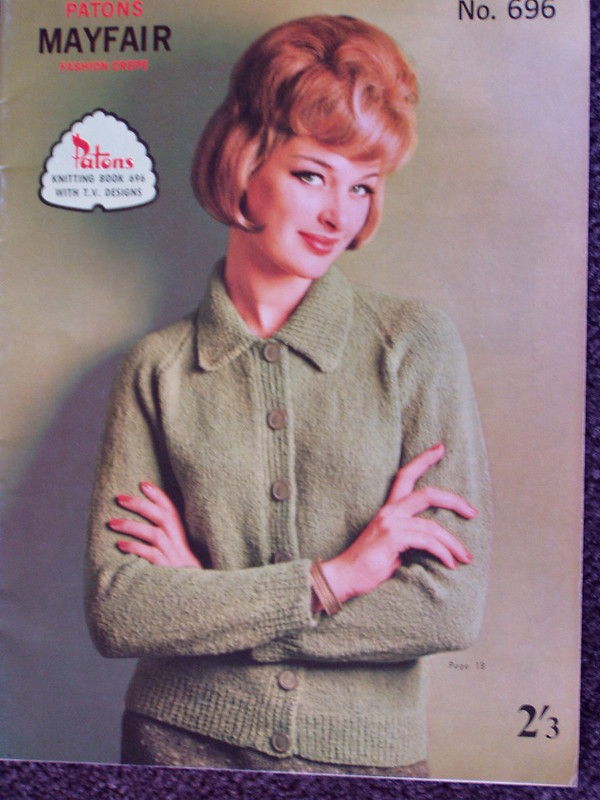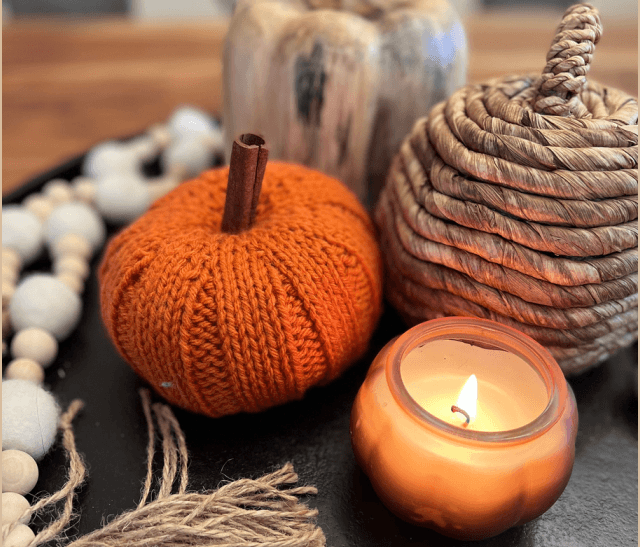I have always been interested in the everyday history, and the 20th century is a particularly fascinating one. So it only makes sense that when I got into knitting, I wanted to explore what knitting was like through the decades.
In the 20th century, knitting went through some major changes that reflected what was going on in society, culture, and the economy. Sometimes it was all about practical winter clothes, and other times it was all about the latest fashion trends. It’s great that nowadays – with the availability of social media, knitting has became cool again and it’s taken up by new generations of people.
Where to get vintage patterns?
Before we dive into the history of knitting through the decades, you may be wondering were to get original vintage patterns for you to get your teeth in. The websites listed below are a good place to start:
https://vintageknittingpatternarchive.com/
https://thevintagepatternshop.com/product-category/vintage-knitting-patterns/
What you need to know when knitting a vintage pattern
Vintage patterns can differ from modern patterns in a few ways. Vintage patterns often assume a certain level of knowledge or experience, so it may be helpful to have some experience with knitting before attempting a vintage pattern. Also, vintage patterns may not have as many sizing options as modern patterns – and they generally tend to be on the small side – so it may be necessary to adjust the pattern to fit your measurements. In general, they don’t assume any ease – vintage patterns (especially from the 1940s) tend to be figure hugging so you might add some stitches if you want a looser-fitting garment
Vintage patterns may use outdated terminology or abbreviations that you may need to research to understand.
Vintage patterns may use terminology or abbreviations that may no longer be in use or may have different meanings today. For example, a pattern may use the term “darn” to refer to sewing up a hole or “turn” to refer to purling.
Additionally, vintage patterns may use abbreviations that are not commonly used today or may have different meanings depending on the context. For example, “ssk” may mean “slip, slip, knit” in modern patterns, but in vintage patterns it may mean “slip, slip, purl.” To successfully knit a vintage pattern, it may be necessary to research any unfamiliar terms or abbreviations beforehand.
The gauge or tension of vintage patterns may not match modern yarns, so you may need to adjust the pattern or find a similar yarn.
Vintage knitting patterns may require some adjustments to be made in regards to the gauge or tension, as modern yarns may not match the gauge of the yarns used in vintage patterns. Gauge refers to the number of stitches and rows per inch, which can vary depending on the yarn and needles used.
Vintage patterns often assume a specific gauge, and if modern yarns are used, the garment may end up either too small or too large. To adjust for this, one may need to use different sized needles or even adjust the number of stitches cast on. Alternatively, finding a similar yarn with a matching gauge can also be an option.
Vintage patterns may be written in a different style or format, so it may take some time to get used to the instructions.
Vintage pattern generally assume a higher level of knitting knowledge than modern patterns do. Consequently, if you are used to a pattern written practically row by row, vintage pattern may baffle you as they tend to come with a far more succinct instructions.
Additionally, vintage patterns may not have been professionally tech edited or test knitted, so there may be errors or inconsistencies in the pattern. It may be necessary to adjust the pattern to fit your measurements, or to research any unfamiliar terms or techniques beforehand.
Knitting at the turn of the century – 1900 to 1920s
In the early 1900s, knitting was still largely a practical craft, used to create warm and durable clothing for the winter months. However, the popularity of knitting was beginning to grow, and it would soon become a fashionable pastime for women across the world.
One of the reasons for the growing popularity of knitting during this time was the availability of new materials. Wool was abundant in many parts of Europe and North America, and was an ideal material for knitting. Wool was warm, durable, and easy to work with, and it was also relatively easy to dye, which meant that knitters could create a wide range of colours and patterns.

Another reason for the growing popularity of knitting during this time was the rise of mass-produced knitting patterns. Knitting had traditionally been passed down from generation to generation, with patterns and techniques being taught within families. However, in the early 1900s, companies began to produce knitting patterns on a large scale, making them more widely available to the general public. These patterns were often sold in magazines and newspapers, and could be purchased for a small fee.
In addition to mass-produced patterns, knitting schools and classes began to appear across Europe and North America. These schools taught women (and sometimes men) how to knit, and were often associated with charitable organizations. Women would often knit garments for soldiers and sailors, or for those in need.
Knitting in the 1920s and 1930s
The 1920s and 1930s were a time of social, cultural, and economic change, and knitting played a significant role in this transformation. Knitting became a fashionable pastime for women, and knitted garments like cardigans, pullovers, and dresses became popular. Women would often knit their own garments, which allowed them to express their creativity and individuality.
Knitting patterns also evolved during this time, with many more intricate designs becoming popular. Lace knitting, for example, became very popular in the 1920s, and involved creating intricate patterns using a combination of knit and purl stitches. Knitters would often use delicate fibers like silk and cotton to create these intricate patterns, which gave the garments a luxurious and elegant feel.
The 1930s saw a shift towards more practical and functional knitted garments, as the Great Depression forced people to be more frugal and resourceful. Knitted garments like socks, scarves, and hats became more popular, as they were warm, durable, and affordable. Knitting also played a role in the American war effort during World War II, with many women knitting socks, hats, and other items for soldiers.
Overall, knitting in the 1920s and 1930s was a reflection of the social and cultural changes that were taking place during this time. Knitting became a way for women to express their creativity and individuality, and to create fashionable garments that were both beautiful and practical. The popularity of knitting during this time was also a reflection of the economic and political climate, with knitted garments being seen as a frugal and practical way to stay warm and comfortable.
Knitting in the 1940s – Knit for Victory
During the 1940s, knitting became much more than just a hobby or pastime. The Second World War had a significant impact on the knitting industry, with many women using their knitting skills to help support the war effort. As wool was in short supply, knitters were encouraged to unravel old sweaters and socks in order to reuse the yarn. Many women also donated knitted items to soldiers, including socks, gloves, and scarves.

The effort to knit for soldiers was known as “knitting for victory,” and it helped to boost morale both on the home front and for soldiers overseas. This effort was particularly important in Britain, where rationing made it difficult for people to buy new clothing. Knitting became a way for women to contribute to the war effort while also keeping their families warm and clothed.
During the war, knitting patterns also changed to reflect the needs of the time. Knitters were encouraged to create practical, functional items like socks, gloves, and scarves, rather than more frivolous garments. Patterns for socks and gloves were particularly popular, as these items were in high demand by soldiers. Many knitters also created garments for themselves and their families, using whatever materials they had available.
The war also had an impact on the availability of knitting supplies. Wool was in short supply, and many knitters had to make do with synthetic fibers like rayon and nylon. While these fibers were not as warm or durable as wool, they were more affordable and accessible, which made them popular during the war years.
https://www.vam.ac.uk/articles/1940s-knitting-patterns
Knitting in 1950s and 1960s
After the end of World War II, knitting became a popular pastime once again. Many women had put down their needles during the war years and were eager to pick them up again. In the 1950s and 1960s, knitting became a symbol of domesticity, as women created hand-knitted garments for their families and homes.
During this time, knitting patterns became more complex and intricate, reflecting the changing tastes and styles of the era. Women would often gather in groups to share patterns and techniques, making knitting a social activity as well as a creative one.

The 1950s and 1960s were also a time of great change in the textile industry, with the rise of synthetic fibres like nylon and polyester. These fibres were cheaper and more durable than natural fibres like wool and cotton, and they quickly became popular with knitters. Synthetic fibres also allowed for the creation of new textures and designs, as well as more vibrant colours.
One of the most iconic knitted garments of the 1950s was the twinset, which consisted of a matching cardigan and pullover sweater. The twinset became a symbol of feminine elegance and was worn by women of all ages. The 1960s saw a shift towards more casual and comfortable clothing, with knitted garments like ponchos and shawls becoming popular.
In addition to traditional hand knitting, the 1960s saw the rise of machine knitting. Knitting machines had been around since the 19th century, but they became more widely available and affordable during the 1960s. Machine knitting allowed for the production of knitted garments on a much larger scale, making them more affordable and accessible to a wider range of people.
The 1960s also saw the rise of the “hippie” movement, which rejected the mainstream values of society and embraced a more bohemian lifestyle. Knitting became a symbol of this movement, with many young people knitting their own garments and accessories. The popularity of knitting during this time was also a reflection of the growing interest in crafts and handmade goods.
Overall, knitting in the 1950s and 1960s was a reflection of the changing tastes and styles of the era. Knitting became a symbol of domesticity and femininity, as well as a creative outlet for women. With the rise of synthetic fibres and machine knitting, knitted garments became more affordable and accessible to a wider range of people. And with the growing interest in crafts and handmade goods, knitting continued to evolve and adapt to the changing times.
Here are some amazing patterns from the 50s and 60s
Knitting in the 1980s and 1990s
Knitting in the 1980s and 1990s saw a resurgence in popularity, as people rediscovered the joys of this traditional craft. While knitting had never completely disappeared, it had fallen out of favor in the previous decades, as people turned to more modern forms of entertainment and leisure activities. However, in the 1980s and 1990s, knitting experienced a revival, as people began to appreciate the artistry and creativity involved in this craft.
One of the reasons for the resurgence in popularity of knitting during this time was the feminist movement. Knitting had traditionally been seen as a female activity, and had been associated with domesticity and subservience. However, the feminist movement of the 1980s and 1990s sought to reclaim knitting as a symbol of empowerment and creativity. Women began to see knitting as a way to express their individuality and to create something beautiful and unique.
Another reason for the resurgence in popularity of knitting during this time was the rise of DIY culture. The 1980s and 1990s saw a growing interest in crafts and handmade goods, as people sought to create their own unique items rather than relying on mass-produced goods. Knitting fit perfectly into this DIY culture, as it allowed people to create their own garments and accessories using a variety of fibres and techniques.
The popularity of knitting during the 1980s and 1990s was also driven by a renewed interest in traditional crafts and techniques. Knitting had a long history, and many people began to appreciate the artistry and skill involved in creating knitted garments. This renewed interest in traditional crafts was also reflected in other areas, such as woodworking, pottery, and weaving.
During the 1980s and 1990s, knitting patterns became more diverse and creative. Knitters were no longer limited to simple scarves and hats, but could create intricate garments and accessories using a variety of fibres and techniques. Knitting magazines and books became more prevalent, and knitters could find patterns for everything from sweaters and dresses to socks and shawls.
One of the most iconic knitted garments of the 1980s was the oversized sweater, which became known as the “big sweater” or the “sloppy joe.” These sweaters were often created using chunky yarns and oversized needles, and were designed to be worn loose and slouchy. The popularity of the big sweater reflected the growing interest in comfortable and casual clothing, as well as the desire for garments that were easy to make and easy to wear.
The 1990s saw a shift towards more minimalist and streamlined designs, as people sought to simplify their lives and wardrobes. Knitting patterns became more pared-down, with a focus on clean lines and simple shapes. The popularity of natural fibres like wool and cotton also increased, as people sought out more sustainable and eco-friendly materials.




